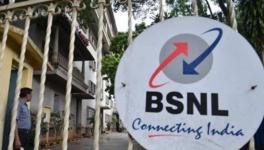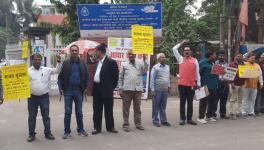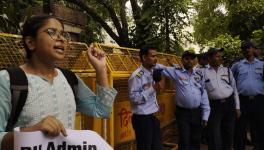NTP 2012 – Past Scams as New Policy
The National Telecom Policy 2012 (NTP 2012) has now become the official policy after one year of discussions. Of course, the context of the policy – the aftermath of the 2G scam – has now changed with 122 licenses being cancelled by the Supreme Court. So some of the earlier drivers of the new policy, bailing out the new entrants who had secured licenses fraudulently are no longer there, but the broad thrust of the policy – help the private sector at the cost of the public sector telecom companies remain. Also a new scam is in the making. Some of the telecom majors had not bid for an all India license for 3G services, but were offering all India services through “roaming”. Once this was challenged in the courts, the Government finally moved and declared this attempt as illegal. NTP 2012 appears to give a break-out-of jail card to such parties by declaring free roaming as an objective of policy.
The key elements of NTP 2012 are the following:
-
The predominant role of the private sector in telecom services
-
Allow sharing of physical infrastructure and networks
-
Sharing, pooling and trading of spectrum
-
Mergers and acquisitions to help consolidation of players, read create bigger private monopolies
-
Abolish roaming charges
Apart from these, there are also various good wishes tucked into the policy without any concrete measures for realising them. They are
-
The increase of broadband connectivity from the very low level of about 14 million currently to 175 million by 2017 and 600 million by 2020
-
Making India into a major telecom manufacturing hub
Any new policy should start by looking at the past telecom policies – NTP 94 and NTP 99 – and analyse the developments that lead to the requirement of a new policy. NTP 2012 pretends that that it is operating in vacuum. It has no analysis of NTP 99 with regards to its goals and what has been achieved or not achieved. Nor is there any analysis of the new technologies that are are coming in and the policy requirements to address the new technological changes. In telecom particularly, the driver of policy worldwide has been the rapid technological changes taking place. NTP 2012 has no analysis of what are the new technological changes that are emerging and the challenges to existing policy.
The origin of NTP 2012 lies in the need to bail out private operators. The current mess is the result of the scam ridden telecom regime that has characterised the UPA and earlier NDA telecom policies. Instead of addressing the root cause of the current mess, the attempt in NTP 2012 is to help the private operators at the expense of the public sector operators – BSNL and MTNL. This comes out clearly when we look at NTP 2012 and its talk of sharing infrastructure and networks between operators.
Under Raja, amongst the many scams that had taken place in the telecom sector, there is one that has largely gone unnoticed. This was his directive to BSNL to allow “intra-circle” roaming by private operators by using BSNL’s network. World over, roaming means an operator has a home territory for which he has a license and therefore a home network. If a subscriber leaves this home territory, he then roams on the network of other operators; this is inter-circle roaming as telecom territories are designated as circles in India. Intra-circle roaming was a mechanism through which Raja allowed private operators who had secured a license at throw-away prices and did not want to invest capital in building a network to start operations by using BSNL’s network. Since no private operator would allow their network to be used, therefore the need to force BSNL to open their network to Raja’s favourite private operators.
TRAI had protested against this peculiar concept of intra-circle roaming arguing that it would mean all the targets in the license of building networks by a certain date and meeting various other performance obligations would then become meaningless. However, Raja paid no heed to such objections. For him, it was important that the private operators acquire subscribers immediately without building a network so that they could sell their licenses at a high price. Sibal – the new telecom minister -- had not only endorsed Raja’s infamous first come first served policy of giving licenses, he also wanted to elevate Raja’s policies of poaching on BSNL’s network. This is why NTP 2012 (originally NTP 2011 as it was floated in 2011) has two specific policy provisions. One is elevating intra-circle roaming to a policy of sharing networks and the other of allowing private operators of selling their licenses more easily under the guise of facilitating consolidation though mergers and acquisitions. In other words, make Raja’s scam ridden regime the new policy.
Worldwide, there have been discussions on sharing of networks by operators. The prevailing consensus is that while the passive network elements – the cellular towers – can be shared, the active network, the cells and the switches cannot be shared without causing enormous regulatory complications. Further, no operator would allow its network to be used by a competitor except for roaming. For this reason, while there are examples of sharing of the physical infrastructure such as cell towers, there are no examples in other countries of sharing of the active network as proposed in 2012 policy. If networks can be shared as is being proposed in the policy, all the objections that TRAI had against intra-circle roaming would also hold.
This brings us to the next big hole in NTP 2012. In 2010, the 3G licenses were auctioned. Airtel, Vodafone and Idea cellular had evidently made a cartel and did not bid for all the circles. Instead, each of them bid for only a certain number of circles and therefore paid a fraction of the price that BSNL and MTNL together paid for an All India license. However, under the guise of roaming agreements, all the 3 parties started offering 3G services in all parts of the country. In other words, they were offering services to subscribers in areas for which they had not secured licenses, in patent violation of the license terms and conditions. Initially, the Department of Telecom (DOT) and the Ministry of Communications and Information technology (MOC&IT) took no action on this despite internal notes an memos that this was a violation of the license terms and conditions and unfair to BSNL who had been forced to pay a much higher amount for their all India license. The BSNL Association filed a petition in Delhi High Court on this matter and finally forced the Ministry to act. The matter is now under TDSAT as the private players have appealed against this step of DOT.
The current policy – NTP 2012 – again legitimises under the guise of policy -- what is illegal under the current terms and conditions. This is being attempted by doing away altogether with the concept of roaming – the policy talks about having no roaming charges.
Interestingly, doing away with roaming did not appear in the original draft policy document. It appears to have been inserted in the final policy document only in order to help the 3G operators in their case against DOT.
As we had discussed earlier, the concept of roaming arises from the concept of a home territory of an operator for which he has secured a license. Therefore, doing away with roaming charges makes no sense unless we also do away with licensing and awarding spectrum for circles. Given the current regime, which is built on the concept of circle-wise award of licenses and spectrum, a policy intent of doing away with roaming charges has no meaning. It makes sense only if we take into account the current case of 3G before TDSAT and a desire by the Ministry to help the private parties.
If we look at NTP 2012 as a policy document, it is a queer mishmash of good intentions and disjointed statements which appear to have no relation to the objectives of the policy. It makes sense only if we look at the policy that these well-meaning objectives are a cover for a set of steps that the ministry wants to take to help the private operators but cannot state as objectives.
Let us take a look at the central premise of the policy – the need to consolidate the telecom sector. If this is indeed a goal, what sense is there of a policy that seeks to create a new class of operators who will be just having the physical infrastructure? This class of new operators will hold the physical infrastructure which can then be used by other operators. In other words, even more fragmentation of the telecom sector.
While this policy measure makes no sense in terms of the objective of consolidation, it makes sense if we look at the underlying objective of the policy – help the private operators at the expense of the public sector BSNL and MTNL. BSNL today has the largest copper cable network in the country – 10 times larger than any other basic service operator. What is being proposed under the guise of creating new operators, is hiking off the copper cable network of BSNL and making it available for all the private operators.
The concept of separating the network from delivery of services has many serious issues -- technical, legal and commercial. No serious study has been done by DOT before proposing such a policy. Neither has it been examined what the implications of this will be in terms of the licenses that have already been issued. Instead, the Raja policy of using BSNL’s infrastructure for private operators is now being extended to all areas of telecom services.
While self-reliance has been a part of both NTP 1994 and 1999, Indian manufacturing has been completely destroyed in the last 20 years. India had a strong manufacturing sector with ITI manufacturing a major part of the high-
Get the latest reports & analysis with people's perspective on Protests, movements & deep analytical videos, discussions of the current affairs in your Telegram app. Subscribe to NewsClick's Telegram channel & get Real-Time updates on stories, as they get published on our website.























